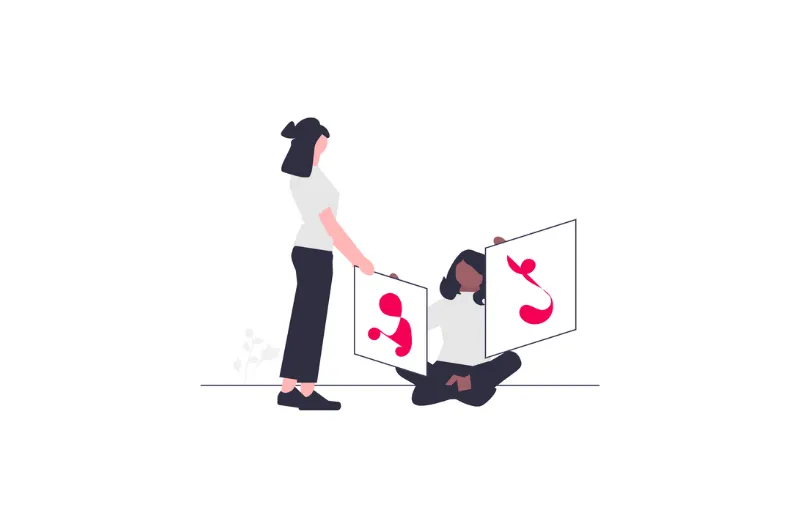What AI brings to a well-designed UX strategy

AI doesn't replace the work of UX teams, but rather to make it more strategic.
It makes it possible to base decisions on data, accelerate design processes and connect digital experiences with business results.
In a well-designed UX strategy, artificial intelligence becomes an ally for making better decisions, not a substitute for human judgment.
We'll tell you how AI can bring real value to a UX strategy.
5 ways AI is changing work in UX
The incorporation of AI into design and analysis processes is changing the way teams research, validate and improve digital products.
These are five areas where your contribution is already tangible.
1. Faster and more continuous research
User research has always been a fundamental part of UX, but it's also one of the slowest and most expensive.
It requires observing patterns, interpreting recordings, and analyzing large volumes of qualitative data. AI has significantly reduced that effort.
Tools such as Microsoft Clarity or Hotjar incorporate artificial intelligence models capable of automatically identifying repeated behaviors, frustrated clicks or areas of the page where users stop without moving forward. This allows teams to detect problems without having to manually review hundreds of recordings or heat maps.
UX professionals can spend less time gathering information and more time interpreting it and prioritizing improvements that generate measurable impact.

2. Prototypes ready to validate ideas
Prototyping is often a time- and resource-intensive phase. It requires translating abstract ideas into visual structures that allow us to evaluate flows, contents and functionalities before investing in development.
With the support of AI, this stage becomes more agile and experimental.
Teams can generate initial versions based on descriptions or requirements and quickly adjust them based on user response or project objectives.
The value is not in producing more prototypes, but in Try more ideas in less time, reducing the risk of investing in the wrong directions. Design thus goes from being an execution exercise to becoming a process of making informed decisions, where each iteration has an evidence base.
3. Automated usability testing
The evaluation of the user experience has gone from being a one-off task to becoming an ongoing practice.
Previously, teams needed to organize in-person sessions, observe participants, and review recordings to detect usage problems. It was a useful process, but not very scalable.
Artificial intelligence allows us to analyze user interaction directly on the product and automatically detect behaviors that indicate difficulty or frustration. When processing clicks, movements and response times, it identifies patterns that indicate where navigation is interrupted or what elements create confusion.
This type of analysis is not a substitute for user testing, but it does expand its scope and frequency. The result is a more agile improvement, based on continuous observations and evidence that reflects the actual use of the product.
.webp)
4. Real personalization of the experience
Personalization is no longer based only on demographics, but also on behaviors, context and moment of interaction.
This means that the same digital product can be dynamically adapted to the needs of each person: the order of the contents, the recommendations or even the way of presenting the information may vary depending on the purpose for which the user accesses it.
It allows you to adjust the experience precisely and consistently with business objectives. Personalization ceases to be aesthetic and becomes an optimization tool.
5. Results-based UX decisions
One of the main challenges of UX has always been to demonstrate its impact on business results.
AI helps to close that gap by directly connecting user experience data to business metrics such as conversion, retention or operating costs.
Thanks to this connection, teams can evaluate which improvements have a real effect on the organization's objectives and prioritize accordingly. Decisions are no longer based on internal perceptions or debates and are based on quantifiable evidence.
In this way, UX is consolidated as an essential part of the business strategy, not just as a component of visual design.
.webp)
AI doesn't replace design: it makes it more efficient
Applying artificial intelligence to UX work does not imply delegating creativity or automating decisions, but improve the quality and speed with which they are taken.
By integrating data, analysis and continuous learning, AI can detect opportunities that previously went unnoticed, reduce the margin of error and validate hypotheses more quickly.
The value is not in the technology itself, but in how it is used to reinforce the fundamentals of design: understanding the user, anticipating needs and offering experiences consistent with business objectives.
When applied judiciously, AI turns UX into a more accurate, measurable and efficient practice, capable of balancing intuition and evidence to make better decisions.
We're here to help
At Novicell, our UX specialists combine strategy, design and technology to create digital experiences that connect with people and bring value to the business.
Talk to us if you want to improve the experience of your users or align your design with business objectives.
Cómo podemos ayudarte
Consulta los servicios con los que te ayudaremos a conseguir tus objetivos digitales.
.webp)